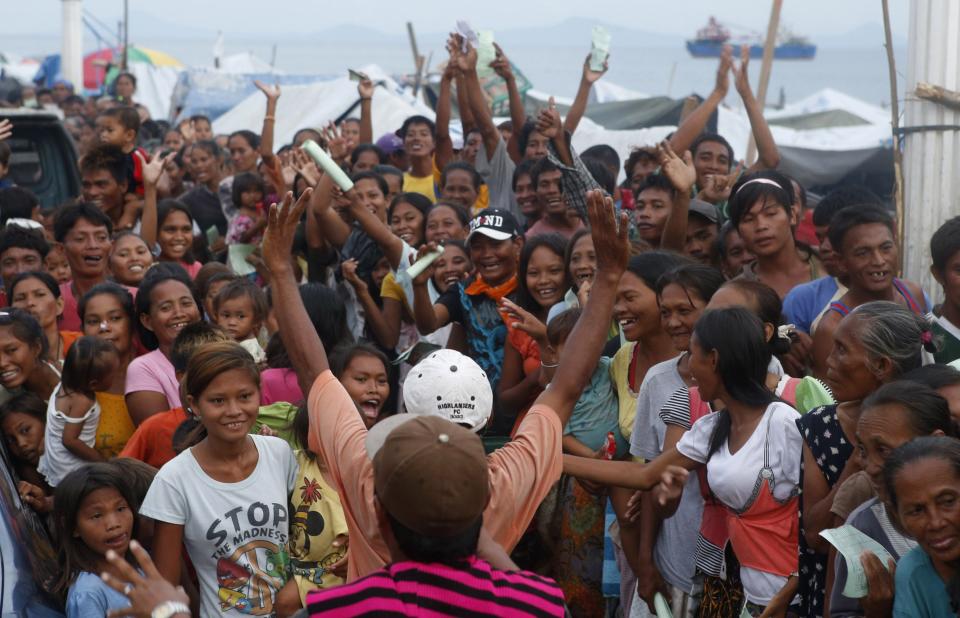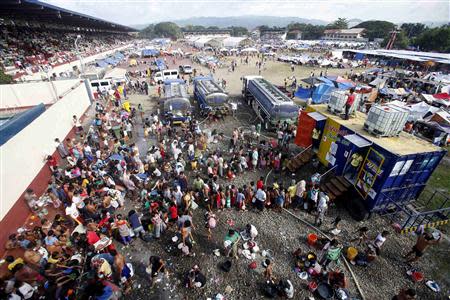Southern violence a thorn in side of Philippines' booming economy
By Rosemarie Francisco MANILA (Reuters) - A commercial hub besieged by heavily armed guerrillas, hundreds of houses gutted by fire, helicopters raining rockets on rebel positions. The images from the Philippines this past week sit uncomfortably with its new-found reputation as an emerging market success story and one of Asia's fastest-growing economies. The violence in Zamboanga City in the country's long-troubled south will have little immediate economic or investment impact as long as it doesn't spread in coming weeks, government officials and economists say. But it underscores how the resource-rich island of Mindanao could remain a long-term weakness for the economy as the explosive mix of clans, Muslim and communist rebel groups and guns drains the military's resources and keeps investors away. "Mindanao has so much to offer, but of course the stupid fighting in Zamboanga is just throwing everything back. Selling Mindanao to investors is so difficult now," Henry Schumacher, vice president for external affairs of the European Chamber of Commerce of the Philippines, told Reuters. The island, about the size of Portugal, accounts for around one-quarter of the Philippines' 97 million population and one-fifth of its economy. It is rich in agricultural, marine and mineral resources - much of them untapped - and the government wants to get on track oil and gas exploration delayed by objections from some rebels. Despite Mindanao's riches, its people are the country's poorest thanks to decades of chronic insecurity fuelled by separate communist and Muslim rebellions and by al Qaeda-linked Islamist militants who the government has proved unable to stamp out. A historic peace deal signed last year between the government and the largest Muslim rebel group appeared to mark the beginning of the end of a 40-year conflict that has killed 120,000 people, displaced two million and stunted growth. CAUTIOUS INVESTORS Large companies such as food processor Del Monte Pacific Limited, which has a pineapple plantation in Mindanao, had said they were cautiously considering expanding their operations in the wake of the deal. Few major investments have gone ahead since then, particularly in the western parts of the island near Zamboanga where Muslims form a majority in the predominantly Christian country. That decision looks wise after a splinter group from the Moro National Liberation Front (MNLF), which feels ignored by the 2012 agreement, sparked a week of chaos in Zamboanga that left more than 100 dead, 200 wounded, and paralysed the city of 800,000. On Wednesday, the army had mostly driven the rebels out of the city, except for pockets of resistance in three coastal villages, and the airport was scheduled to partly reopen on Thursday. But the violence raises renewed doubts over whether the government can make last year's peace deal stick. Bombings on Monday in two malls in Davao City, 400 miles east of Zamboanga underlined concerns the violence could spread, though officials played down that prospect. Government officials also minimised the broader economic impact of the conflict, which forced the closure of Zamboanga's busy port, its airport and many businesses. Finance Secretary Cesar Purisima told reporters in Manila this week that much of Mindanao's economy was doing well, noting recent investments there in shipbuilding and power and that it recently shipped banana exports to the United States for the first time. "The area that has issues is on the western side and it is a small portion of Mindanao," Purisima said. "Nevertheless, this has to be resolved." In a measure of the government's concern over the violence, President Benigno Aquino flew to the conflict zone on Friday and has stayed, personally overseeing relief work and army operations against the gunmen. The Philippine economic boom of recent years has mostly been driven by an expanding middle class, more competent policymaking and optimism over Aquino's reformist credentials. The economy grew a robust 7.5 percent in the second quarter, matching China's pace and defying a slowdown in neighbouring countries. And there's no evidence at this stage that the Mindanao violence is hurting Philippine markets. Between their close on September 9 - the day the trouble began - and Wednesday afternoon, the peso gained 1.6 percent while Manila's benchmark share index was up nearly 6 percent. COUNTRY STORY 'REMAINS POSITIVE' As long as incidents are only in local parts of the southern Philippines, "then the economic story remains positive. External payments remain robust, and government infrastructure spending is growing fast and is expected to continue," said Jose Mario Cuyegkeng, economist at ING Bank in Manila. John Martin Miller, chairman and chief executive of Nestle Philippines Inc, told Reuters the company was committed to its operations in Mindanao, where it has its largest Philippine factory, in Cagayan de Oro in the island's north. For the country, "the big picture is extremely positive... with all the initiatives that the government is pursuing particularly in terms of building infrastructure, it's never been a better time to invest in the Philippines," Miller said. But security concerns have discouraged new investments in Mindanao, prolonging a spiral of poverty and conflict that weighs on the national economy. The region's poverty rate of more than one-third is well above the 28 percent national average. "We all know that so much more investment has to flow into Mindanao in order to have inclusive growth," said Schumacher. "If you don't have inclusive growth, then these people who are fighting today have nothing to lose and will just continue." (Additional reporting by Manny Mogato; Writing by Stuart Grudgings; Editing by Richard Borsuk)

